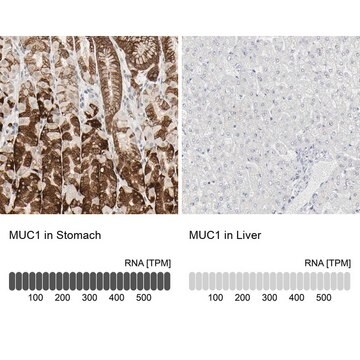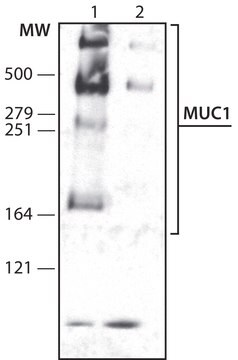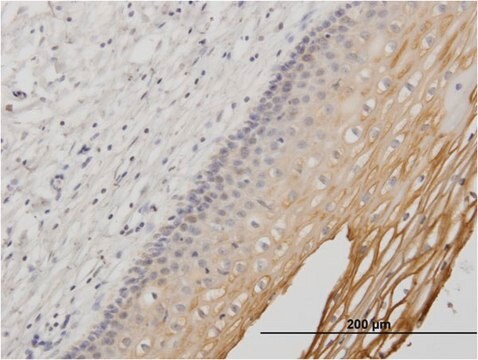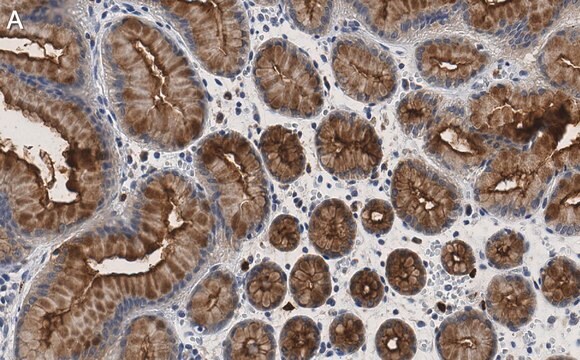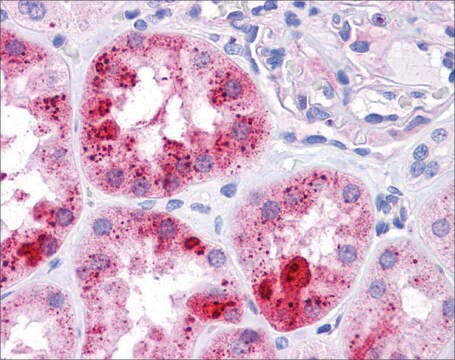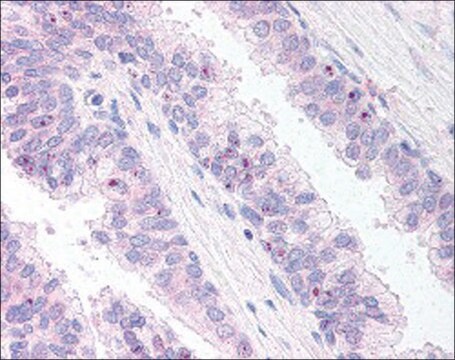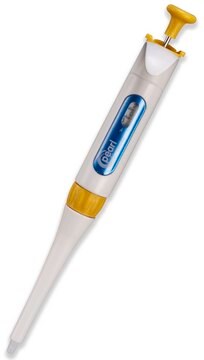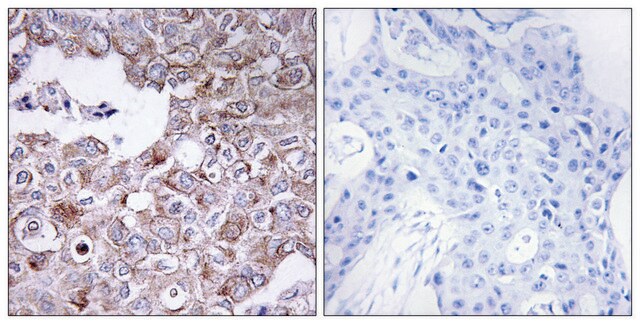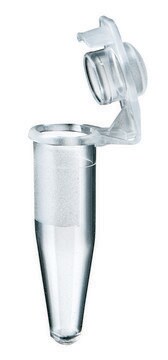MABC1613
Anti-MUC1 Antibody, clone HMFG2
clone HMFG2, from mouse
Sinonimo/i:
Mucin-1, Breast carcinoma-associated antigen DF3, Cancer antigen 15-3, CA 15-3, Carcinoma-associated mucin, Episialin, H23AG, Krebs von den Lungen-6, KL-6, PEMT, Peanut-reactive urinary mucin, PUM, Polymorphic epithelial mucin, PEM, Tumor-associated epit
About This Item
Prodotti consigliati
Origine biologica
mouse
Livello qualitativo
Forma dell’anticorpo
purified immunoglobulin
Tipo di anticorpo
primary antibodies
Clone
HMFG2, monoclonal
Reattività contro le specie
human
tecniche
immunohistochemistry (formalin-fixed, paraffin-embedded sections): suitable
immunoprecipitation (IP): suitable
western blot: suitable
Isotipo
IgG1λ
N° accesso NCBI
N° accesso UniProt
Condizioni di spedizione
ambient
modifica post-traduzionali bersaglio
unmodified
Informazioni sul gene
human ... MUC1(4582)
Descrizione generale
Specificità
Immunogeno
Applicazioni
Western Blotting Analysis: A representative lot detected MUC1 in Western Blotting applications (Kaur, S., et. al. (2014). PLoS One. 9(3):e92742; Schroeder, J.A., et. al. (2001). J Biol Chem. 276(16):13057-64).
Affects Function: A representative lot detected MUC1 in Affects Function applications (Schettini, J., et. al. (2012). Cancer Immunol Immunother. 61(11):2055-65).
Immunoprecipitation Analysis: A representative lot detected MUC1 in Immunoprecipitation applications in (Schroeder, J.A., et. al. (2001). J Biol Chem. 276(16):13057-64).
Immunohistochemistry Analysis: A representative lot detected MUC1 in Immunohistochemistry applications in (Sakurai, J., et. al. (2007). Eur J Histochem. 51(2):95-102).
Apoptosis & Cancer
Qualità
Immunohistochemistry Analysis: A 1:1,000 dilution of this antibody detected MUC1 in human breast cancer tissue.
Descrizione del bersaglio
Stato fisico
Stoccaggio e stabilità
Altre note
Esclusione di responsabilità
Non trovi il prodotto giusto?
Prova il nostro Motore di ricerca dei prodotti.
Raccomandato
Codice della classe di stoccaggio
12 - Non Combustible Liquids
Classe di pericolosità dell'acqua (WGK)
WGK 1
Certificati d'analisi (COA)
Cerca il Certificati d'analisi (COA) digitando il numero di lotto/batch corrispondente. I numeri di lotto o di batch sono stampati sull'etichetta dei prodotti dopo la parola ‘Lotto’ o ‘Batch’.
Possiedi già questo prodotto?
I documenti relativi ai prodotti acquistati recentemente sono disponibili nell’Archivio dei documenti.
Il team dei nostri ricercatori vanta grande esperienza in tutte le aree della ricerca quali Life Science, scienza dei materiali, sintesi chimica, cromatografia, discipline analitiche, ecc..
Contatta l'Assistenza Tecnica.